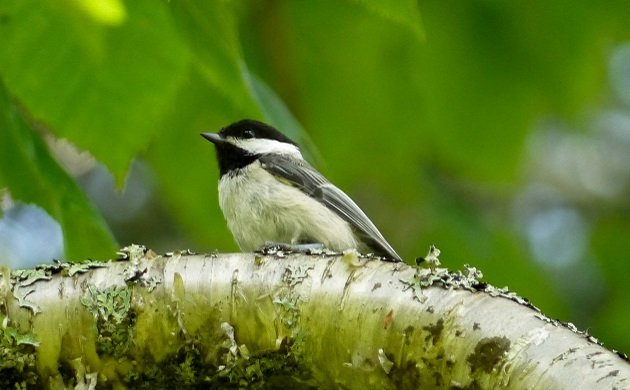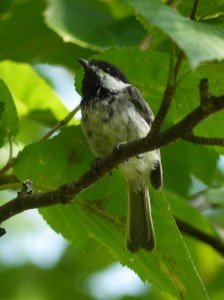
As I am a native of Maine, it is only fitting that my first state bird post is on the Black-capped Chickadee (Poecile atricapillus). This little songbird has a range that extends across the United States and Canada, and is a ubiquitous backyard feeder visitor. As it is a common sight throughout New England, it is no surprise that this chickadee species is also the state bird of Massachusetts. Tom Brown, Jr., famous for his tracker books and field guides, once wrote that, “We learned to be patient observers like the owl. We learn cleverness from the crow, and courage from the jay… But above all of them ranked the chickadee because of its indomitable spirit,” (italics added). I couldn’t agree more!
The Black-capped Chickadee was first proposed as the state bird of Maine in 1927, when a William D. Hall wrote to the legislature with his suggestion. With their diminutive size reaching less than six inches and weighing about as much as three American quarters, they are considered both energetic and adorable. Black caps give them their name, and they sport a black bib to match. Their cheeks are white, but their flanks a buffy tan, all of which distinguishes them from other chickadee species.
Though we all love how chickadees look, it is their sounds that are truly remarkable. Their calls are very complex, and are used to keep in contact with their flocks as well as alert others to danger. Have you ever heard a particularly long chickadee-dee-dee call? It might be because of your very presence; the more “dees” at the end of a call, the higher the chickadee’s perceived threat level. All birds – even non-chickadees or non-members of the mixed flock – will take note of a Black-capped Chickadee alarm call.
A rather damp Black-capped Chickadee near Oquossoc, Maine
Because they do not migrate, Black-capped Chickadees take advantage of wide range of food sources to survive all year round in cold conditions. If you are hoping to attract them to feeders, they will feast on sunflower seeds, suet, peanut butter, as well as mealworms. In more natural feeding environments, wintering chickadees prefer berries and other seeds, and in the summer expand their dietary options with insects and other plant material.
All birders love chickadees. Yes, we appreciate their activity and general rambunctiousness, but though they do not migrate they do form flocks with other, often quieter bird species. Migrating birds such as warblers or vireos will often associate with chickadees, allowing birders to find them with greater ease.
So far, the future looks stable for Black-Capped Chickadees. Though climate change has been pushing their range northward, the eastern populations have been increasing since 1966, more than making up for the slight decline in western populations over the same time period. They have benefited from bird feeders, but also from development that causes increased levels of forest edges. With a population of 41 million, they make a great first species for new birders to identify!














Nice. I haven’t never seen them before. But reading your article I can image what they are look like, so hope I can have a chance to see them.
When I am strolling in the woodlands of Maine, it’s hard to miss this adorable mix of a perfect black cap and the white blush, the distinct identification of a chickadee bird.
Thanks for acknowledging my grandfather’s contribution to the selection of the black capped chickadee as the sate bird of Maine. William D. Hall was Principal of Eastern State Normal School, a teacher’s college in Castine. He and his wife, Letitia, were avid birders. They raised two sons and a daughter, who were also lovers of birds and nature. They lived next to a wooded area that was full of birds, especially chickadees. I remember the birds from the time I was a young child, visiting my grandparents. To me, they seemed cute and friendly. They clustered around the chicken coop, and seemed unfazed by a little girl, toddling over to take a look. In any case, a fitting bird to represent that state of Maine.